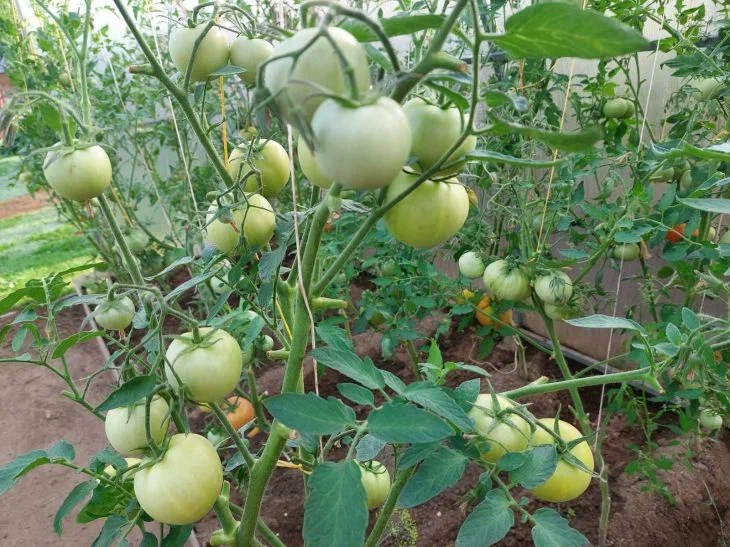A pensioner from a Siberian village has revealed a secret that has changed the way we think about growing tomatoes.
In each hole she puts... a herring head! It sounds crazy, but this method has a scientific basis.
Decomposing fish saturate the soil with phosphorus, calcium and microelements, which are critical for the formation of large fruits.

In 2020, the Tomato Paradise magazine published a study: plants planted with fish waste yielded 70% more than the control group. When fish decomposes, ammonia is released, which gradually turns into nitrates - the main source of nitrogen for plants.
Sergey Novikov from Samara, a participant of the forum "Tomato Growers of Russia", wrote: "Last year I dug a handful of fish meal into the holes - I collected 20 kg from a bush of the "Bull's Heart" variety!"
The method was used by peasants in the Volga region in the 19th century, burying the remains of dried fish in beds. Today it has been improved - instead of whole heads, fish emulsion or bone meal is used.
In Japan, farmers add fermented fish waste (called "魚醤") to the holes, which increases the sugar content of tomatoes.
An alternative for those who are bothered by the smell: banana peel (a source of potassium) or crushed eggshells (calcium).
Fish can also be replaced with spirulina (2 tablespoons per hole) or soy flour. These products are rich in protein, which, when decomposed, gives a similar effect.
But it is the fish, according to Doctor of Biological Sciences Irina Belova , that creates a prolonged effect: “Decomposition lasts 2-3 months, providing constant nourishment to the roots.”
Fish scraps contain chondroitin and glucosamine, which stimulate the growth of root hairs. A study by the University of Florida (2021) showed that tomatoes grown with fish scraps contain 30% more lycopene, an antioxidant responsible for the red color and health benefits of the fruit.
- The hole depth should be at least 30 cm to avoid odor.
- Use only salted or frozen fish - fresh fish will attract cockchafer larvae.
- The method is not suitable for greenhouses: high humidity + fish decomposition = risk of gray mold.
Olga from Novosibirsk shared in her blog: "I added canned sardines to the holes. The tomatoes grew to 2 meters, and the harvest was so heavy that I had to put supports made of metal pipes!"
Warning : Excess nitrogen from fish can lead to "fattening" of plants - abundant growth of foliage at the expense of fruits. To avoid this, apply potassium fertilizers (wood ash, potassium sulfate) a month after planting.
